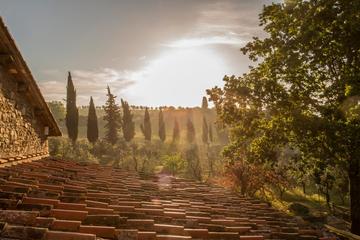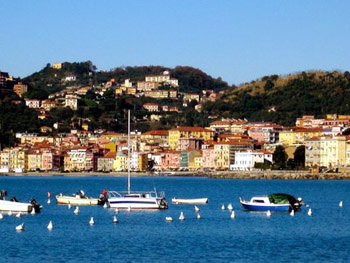
Italy’s Fatal Gift of Beauty
by Sarah Humphreys
Italia! Oh Italia! Thou who hast the fatal gift of Beauty,”
Nowhere does Byron’s tribute to Italy ring more true than in “The Gulf of Poets” on the Ligurian coast, where Percy Bysshe Shelley was drowned in 1822. It is said that the spirit of the English Romantic poet still lives on between the inlets and promontories of this bewitching cove. It is easy to see why.
Stretching from Lerici to Portovenere, in a succession of beaches, jagged coastlines, crystalline waters and raw nature, the Gulf of La Spezia’s literary nickname derives from the attraction the area has had for writers, painters and artists, including Percy and Mary Shelley, Lord Byron, D. H Lawrence, George Sands, Henry Miller and Virginia Woolf.
 Percy and Mary Shelley arrived in the tiny seaside village of San Terenzo in 1819 and rented a villa known as “Casa Magni”, whose whitewashed walls and arched colonnade can be found on the promenade. “A lonely house close by the soft and sublime scenes of the Bay of Lerici”, is how Shelley described the villa in his letters. These lines are inscribed on the walls of the now uninhabited villa, along with “I still inhabit this Divine Bay, reading dramas and sailing and listening to the most enchanting music.”
Percy and Mary Shelley arrived in the tiny seaside village of San Terenzo in 1819 and rented a villa known as “Casa Magni”, whose whitewashed walls and arched colonnade can be found on the promenade. “A lonely house close by the soft and sublime scenes of the Bay of Lerici”, is how Shelley described the villa in his letters. These lines are inscribed on the walls of the now uninhabited villa, along with “I still inhabit this Divine Bay, reading dramas and sailing and listening to the most enchanting music.”
The Shelleys were often visited by Lord Byron, who resided nearby in Portovenere, supposedly in a cave. Byron is said to have swum the incredible 7.5 kilometre distance just to visit his dear friends. Standing at the bottom of “Byron’s grotto” which bears a plaque commemorating “the immortal poet who as a daring swimmer defied the waves of the sea from Portovenere to Lerici.” staring out over the rocks which peer up from the sea, it would seem this story is rather far-fetched, although the romantic in me chooses to believe. As night falls, the grotto takes on an eerie atmosphere, rocks transform into monstrous figures and it is easy to see how the poets found their muse in this stirring landscape. Byron is believed to have written his poem “The Corsair” in the grotto itself.
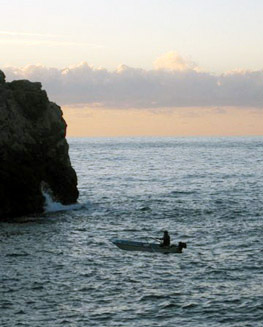 A sprinkling of brightly coloured houses line medieval streets that wind up to Lerici’s castle, which overlooks the entrance to the Gulf of Poets. The castle is thought to be the inspiration for Mary Shelley’s “Frankenstein.” Nowadays the castle contains a museum of palaeontology.
A sprinkling of brightly coloured houses line medieval streets that wind up to Lerici’s castle, which overlooks the entrance to the Gulf of Poets. The castle is thought to be the inspiration for Mary Shelley’s “Frankenstein.” Nowadays the castle contains a museum of palaeontology.
Shelley composed some of his most beautiful lyrics and songs in this area including “Lines written in the Bay of Lerici” and was working on “The Triumph of Life” at the time of his tragic drowning. Sailing from Livorno to San Terenzo, his boat named “Don Juan” by Byron, but referred to as “Ariel” by the Shelleys, was sunk in a severe storm. The bodies of Shelley and his two English companions, Edward Ellerker Williams and Charles Vivien, were washed up on a beach near Viareggio and cremated in the presence of Byron, and friends Leigh Hunt and Edward Trelawny. A copy of Keats’ poems was found in Shelley’s jacket pocket. According to legend, Shelley’s heart refused to burn in the flames and the ever-audacious Byron plucked it from the embers.
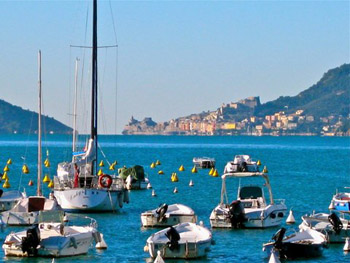 Shelley’s’ ashes were stored in the wine cellar of The British Consul in Rome before being buried in The Protestant Cemetery in Rome, where John Keats was laid to rest just a year before. After Mary Shelley’s death, her husband’s heart was found wrapped in a page of “Adonais”, Shelley’s famous elegy to Keats. Shelley’s heart was eventually buried in St Peter’s Churchyard in Bournemouth, Dorset.
Shelley’s’ ashes were stored in the wine cellar of The British Consul in Rome before being buried in The Protestant Cemetery in Rome, where John Keats was laid to rest just a year before. After Mary Shelley’s death, her husband’s heart was found wrapped in a page of “Adonais”, Shelley’s famous elegy to Keats. Shelley’s heart was eventually buried in St Peter’s Churchyard in Bournemouth, Dorset.
Walking along the coast from Lerici to San Terenzo, the incandescent extent of the waters, reflecting the pastel colours of the attractive buildings, bring to mind Mary Shelley’s words “O blessed shores, where Love, Liberty and Dreams have no chains.”
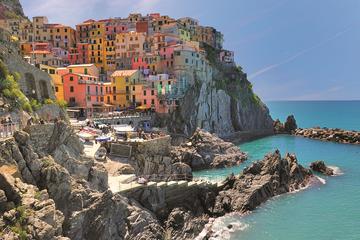
The best of Cinque Terre & Portovenere with Typical Ligurian Lunch
If You Go:
The nearest airports are Pisa and Florence.
♦ Lerici can be reached by ferry from La Spezia, Portovenere and The Cinque Terre. Ferries run from 1st April. There’s a scenic drive from La Spezia and there’s a large car park etween San Terenzo and Lerici. A shuttle bus runs between the two, but it is a short walk to either village.
♦ Portovenere can be reached by ferry from La Spezia or Lerici. There is a bus from the train station in La Spezia.
♦ The Gulf of Poets can get very crowded in high season. Best times to visit are Spring and Autumn.
For details on accommodation, restaurants and other travel information:
♦ www.portovenere.it
♦ www.rivieradellaliguria.com
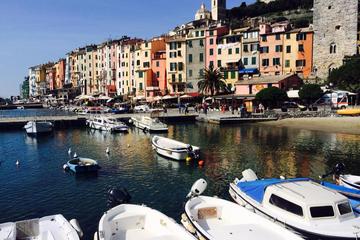
Portovenere and Cinque Terre from Florence Private Custom Tour
About the author:
Sarah Humphreys has been writing since she could hold a pencil. She is originally from near Liverpool in the UK but she’s lived in The USA, Greece, The Czech Republic and Italy. She’s been living in Pistoia, near Florence for 15 years, where she teaches English. She is passionate about poetry, Literature, music and travel.
All photos are by Sarah Humphreys:
San Terenzo
Looking down over ‘Byron’s Grotto’ and the Castle at Portovenere
Sunset over the Gulf of Poets
Lerici harbour looking towards PortoVenere

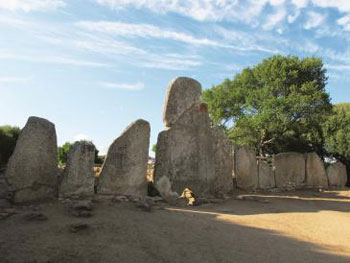
 Today, there are more than 8,000 nuraghes still standing from what is estimated to have numbered more than 30,000. They were most prevalent in the northwest and south-central areas of the island and are usually located in a panoramic spot – strategically located on hilltops to control important passages.
Today, there are more than 8,000 nuraghes still standing from what is estimated to have numbered more than 30,000. They were most prevalent in the northwest and south-central areas of the island and are usually located in a panoramic spot – strategically located on hilltops to control important passages.
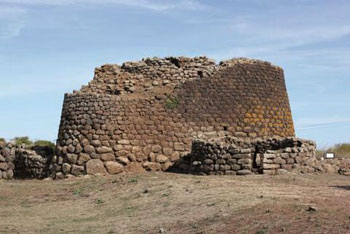 They all are incredibly accessible and available to explore. When you enter a nuraghe, stand in the middle of the cone and stare up at the opening above you, the presence of it’s former inhabitants is almost palpable. The stone stairs to the various interior levels wind-up the sides of the structure leading to antechambers and strange rooms. There is a strong sense of design and intention.
They all are incredibly accessible and available to explore. When you enter a nuraghe, stand in the middle of the cone and stare up at the opening above you, the presence of it’s former inhabitants is almost palpable. The stone stairs to the various interior levels wind-up the sides of the structure leading to antechambers and strange rooms. There is a strong sense of design and intention.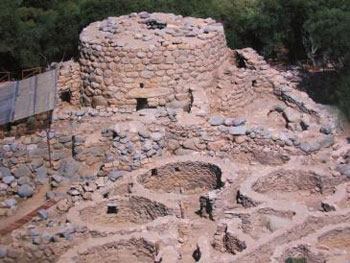 Having stated that, it remains a complete mystery as to who were the Nuragic people. Some clues can be found at The National Archeological Museum in Cagliari. It holds most of the materials discovered in the Nuraghes. They did produce art in the form of beautiful small bronze statues; typically representing Gods, the chief of the village, soldiers, animals and women. There are also stone carvings or statues representing female divinities.
Having stated that, it remains a complete mystery as to who were the Nuragic people. Some clues can be found at The National Archeological Museum in Cagliari. It holds most of the materials discovered in the Nuraghes. They did produce art in the form of beautiful small bronze statues; typically representing Gods, the chief of the village, soldiers, animals and women. There are also stone carvings or statues representing female divinities.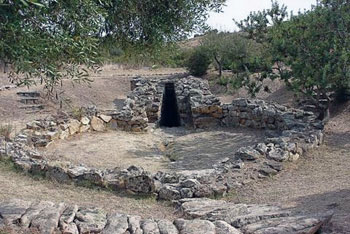 The sacred well of Santa Cristina has a hole in the vault. Every 18 and a half years, when the moon reaches is lowest point in orbit, the moonlight strikes the hole and is reflected on the surface of the water. Sunlight is also reflected during the autumn and spring equinoxes. Through these processes we know they possessed a great knowledge of celestial cycles.
The sacred well of Santa Cristina has a hole in the vault. Every 18 and a half years, when the moon reaches is lowest point in orbit, the moonlight strikes the hole and is reflected on the surface of the water. Sunlight is also reflected during the autumn and spring equinoxes. Through these processes we know they possessed a great knowledge of celestial cycles.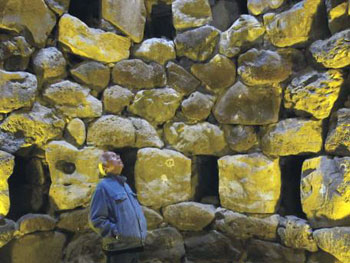 But that is where the certainties end. Scholars are not even sure of the correct name for the civilization, or even the real meaning of nuraghe. The name itself derives from the meaning of mound and cavity, and the nuraghes are built by laying big stones of similar size on top of each other, leaving a cavity in the middle which is then covered by a stone domed roof. For lack of a more informed identification, scientists accordingly have called them the Nuragic peoples.
But that is where the certainties end. Scholars are not even sure of the correct name for the civilization, or even the real meaning of nuraghe. The name itself derives from the meaning of mound and cavity, and the nuraghes are built by laying big stones of similar size on top of each other, leaving a cavity in the middle which is then covered by a stone domed roof. For lack of a more informed identification, scientists accordingly have called them the Nuragic peoples.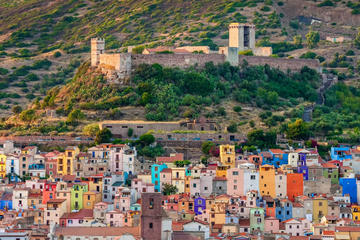
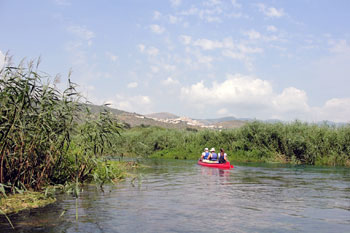
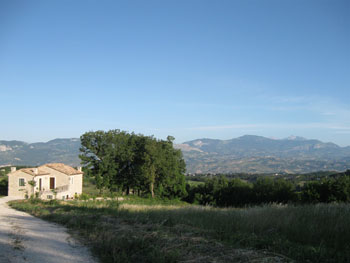 I wonder what it would be like to live here in Abruzzo all the time, far from the pressures of city life, far from tourist traps, close to nature, and to inner peace. Like Celestine. Back in the thirteenth century, he lived higher up these rugged slopes, in a cave, until he was called to the Papacy. But he hated all the glitz and glamour, and missed his life as a hermit, so he swiftly issued a decree allowing popes to abdicate, and returned to his cave.
I wonder what it would be like to live here in Abruzzo all the time, far from the pressures of city life, far from tourist traps, close to nature, and to inner peace. Like Celestine. Back in the thirteenth century, he lived higher up these rugged slopes, in a cave, until he was called to the Papacy. But he hated all the glitz and glamour, and missed his life as a hermit, so he swiftly issued a decree allowing popes to abdicate, and returned to his cave.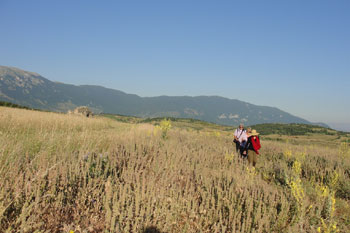 Yes, I think, turning back down the mountain, there’s a spiritual energy here. But I would want a little more material comfort than Celestine had: perhaps I could buy that stone ruin over there on the slope, and convert it. Like Ezio and Mariangela did. A few years ago, they decided to flee the pressures of city life, and bought an eighteenth century property here. They restored it using original materials, and made it into a four-bedroom B&B. They named it Casa Giumentina, after this valley. That’s where I’m staying…and I’m getting hungry. The sun is now warm on the back of my legs. As I approach the house, I see that breakfast has been laid out on the table under the oak tree. I can already smell the cappuccino…and Mariangela’s freshly baked apple cake.
Yes, I think, turning back down the mountain, there’s a spiritual energy here. But I would want a little more material comfort than Celestine had: perhaps I could buy that stone ruin over there on the slope, and convert it. Like Ezio and Mariangela did. A few years ago, they decided to flee the pressures of city life, and bought an eighteenth century property here. They restored it using original materials, and made it into a four-bedroom B&B. They named it Casa Giumentina, after this valley. That’s where I’m staying…and I’m getting hungry. The sun is now warm on the back of my legs. As I approach the house, I see that breakfast has been laid out on the table under the oak tree. I can already smell the cappuccino…and Mariangela’s freshly baked apple cake.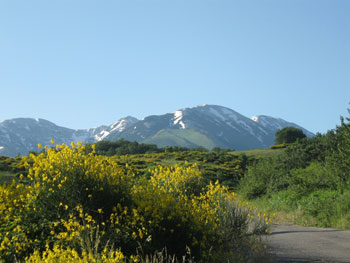 As I enter the village, I notice that the roads have been recently paved. There’s a feeling of progress, of development. After the war, this was one of the most depressed areas in Italy. People left in their hundreds, looking for work, often in mines in northern Europe. The population dropped from 2000 to 450. But things are changing: people are trickling back.
As I enter the village, I notice that the roads have been recently paved. There’s a feeling of progress, of development. After the war, this was one of the most depressed areas in Italy. People left in their hundreds, looking for work, often in mines in northern Europe. The population dropped from 2000 to 450. But things are changing: people are trickling back.
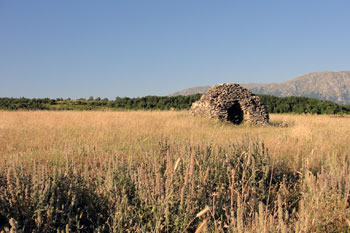 ‘My husband died in the war,’ she says. ‘I never married again. I couldn’t have my sons calling another man “papà”.’
‘My husband died in the war,’ she says. ‘I never married again. I couldn’t have my sons calling another man “papà”.’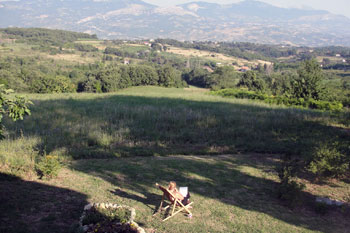 I stroll down to Il Carro, a restaurant which serves local delicacies. I start with an antipasto of salame and pecorino cheese, then have wild boar, with spelt, which is the staple cereal in this area. I accompany it with a glass of Montepulciano wine, and finish up with a fresh strawberry sorbet and an espresso.
I stroll down to Il Carro, a restaurant which serves local delicacies. I start with an antipasto of salame and pecorino cheese, then have wild boar, with spelt, which is the staple cereal in this area. I accompany it with a glass of Montepulciano wine, and finish up with a fresh strawberry sorbet and an espresso.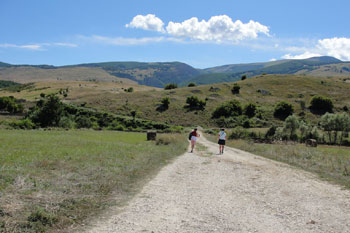 But no, here is where I want to be. The view is too beautiful. I feel warm and relaxed. I’ll sit in a deckchair and read, or write, or perhaps just gaze into space until sunset.
But no, here is where I want to be. The view is too beautiful. I feel warm and relaxed. I’ll sit in a deckchair and read, or write, or perhaps just gaze into space until sunset.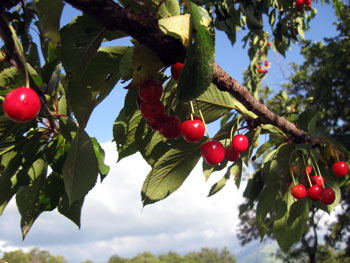 We chop and stir together in the large kitchen. Before settling down to dinner on the terrace I slip on a cardigan. Up here, fifteen hundred feet above the sultry plains below, the evening air is cool.
We chop and stir together in the large kitchen. Before settling down to dinner on the terrace I slip on a cardigan. Up here, fifteen hundred feet above the sultry plains below, the evening air is cool.

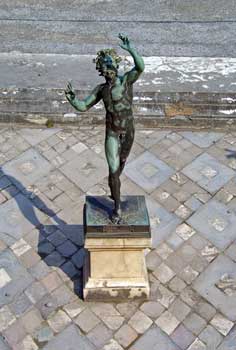 Entering ancient Porta Marina’s pedestrians-only passage, our guide introduces Pompeii. “Just like now, thousands of visitors traveled here,” Massimillio informs us. “And many different languages were spoken.”
Entering ancient Porta Marina’s pedestrians-only passage, our guide introduces Pompeii. “Just like now, thousands of visitors traveled here,” Massimillio informs us. “And many different languages were spoken.”
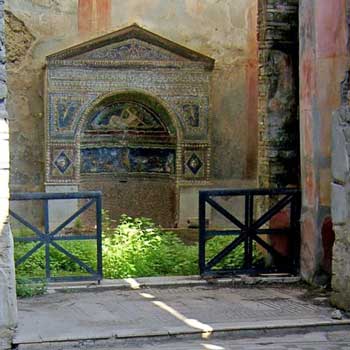 Wealthy nobles lived along via de la Fortuna where elegant homes covered with bright-white ground-marble stucco stood next door to smaller houses. At House of the Faun, an undamaged mosaic displaying the original sign HAVE meaning ‘hail-to-you,’ welcomes us into the entrance hall and open courtyards. Then covering an entire block, its forty stylish rooms included magnificent dining rooms, one for each season. Carved columns had lined two immense gardens filled with marble and bronze statuary and beautiful fountains.
Wealthy nobles lived along via de la Fortuna where elegant homes covered with bright-white ground-marble stucco stood next door to smaller houses. At House of the Faun, an undamaged mosaic displaying the original sign HAVE meaning ‘hail-to-you,’ welcomes us into the entrance hall and open courtyards. Then covering an entire block, its forty stylish rooms included magnificent dining rooms, one for each season. Carved columns had lined two immense gardens filled with marble and bronze statuary and beautiful fountains.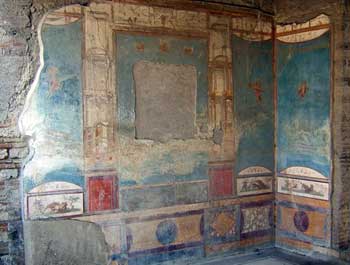 Nearby, the House of the Vetti belonged to bachelor brothers, prosperous wine-merchants. This patrician villa retains original mosaics in green jade, white Carrera marble and indigo-blue onyx; vibrantly colored frescoes decorate well-preserved entertainment rooms. At a smaller house next door, we linger over frescoes in rich earthen tones depicting delicate flowers and winged cherubs, among my favorites for their simple whimsy.
Nearby, the House of the Vetti belonged to bachelor brothers, prosperous wine-merchants. This patrician villa retains original mosaics in green jade, white Carrera marble and indigo-blue onyx; vibrantly colored frescoes decorate well-preserved entertainment rooms. At a smaller house next door, we linger over frescoes in rich earthen tones depicting delicate flowers and winged cherubs, among my favorites for their simple whimsy.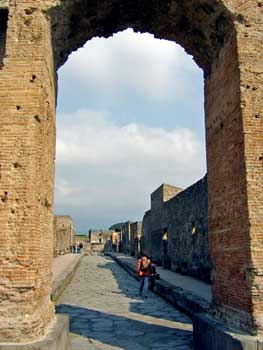 Raised sidewalks wind along the street to one of the 34 bakeries needed to feed Pompeii’s population of over 20,000. “Those squat towers made of volcanic stones milled flour on-site,” reports our guide. Amazed that the well-built ovens so closely resemble today’s brick pizza ovens, we imagine tantalizing aromas floating on the air. During excavations, centuries-old loaves of blackened breads were found inside many ovens.
Raised sidewalks wind along the street to one of the 34 bakeries needed to feed Pompeii’s population of over 20,000. “Those squat towers made of volcanic stones milled flour on-site,” reports our guide. Amazed that the well-built ovens so closely resemble today’s brick pizza ovens, we imagine tantalizing aromas floating on the air. During excavations, centuries-old loaves of blackened breads were found inside many ovens.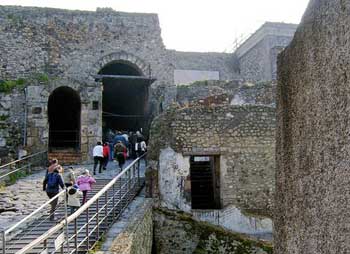 Inside, surprisingly small cells held stone beds once covered by mattresses. Using a separate entrance, wealthier clients had used the more private second-story rooms bedecked with rich frescoes leaving little to the imagination.
Inside, surprisingly small cells held stone beds once covered by mattresses. Using a separate entrance, wealthier clients had used the more private second-story rooms bedecked with rich frescoes leaving little to the imagination.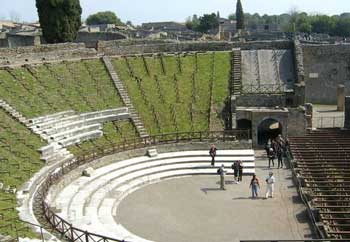 Onward past a former Temple of popular Egyptian goddess Isis, we pause among columns remaining in a second public Forum. This is where theatergoers had mingled in bars and cafes before open-air performances at their Grande Theater. First built in the 2nd-century BC, this theater seated over 5000 citizens in three price ranges. Its smaller semi-circular neighbor, the Odeon staged more intimate mime, plays and musical events.
Onward past a former Temple of popular Egyptian goddess Isis, we pause among columns remaining in a second public Forum. This is where theatergoers had mingled in bars and cafes before open-air performances at their Grande Theater. First built in the 2nd-century BC, this theater seated over 5000 citizens in three price ranges. Its smaller semi-circular neighbor, the Odeon staged more intimate mime, plays and musical events.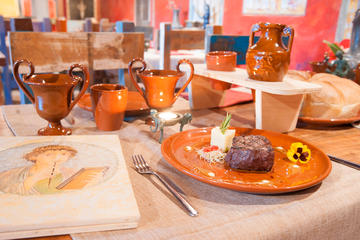

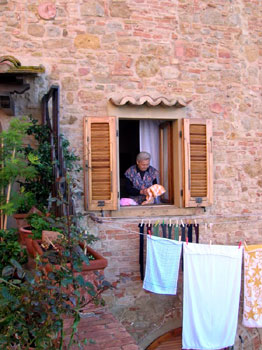 The first written records of this Estrucan village are from 929 AD. Named for the former Bishop of Modena in the 10th century San Gimignano is a Unesco World Heritage site and is also known as the city of beautiful towers. During The Middle Ages while at the peak of it’s influence this town boasted fifty-six towers, some standing more then fifty meters tall and visible from anywhere in the Elsa Valley. These towers were not only status symbols to local families as well they served as a medieval early warning system should would be invaders approach. Because of war, the Black Plague in the 14th century, urban renewal and other catastrophes only fourteen of the towers remain and only one, The Grossa tower was open for our viewing.
The first written records of this Estrucan village are from 929 AD. Named for the former Bishop of Modena in the 10th century San Gimignano is a Unesco World Heritage site and is also known as the city of beautiful towers. During The Middle Ages while at the peak of it’s influence this town boasted fifty-six towers, some standing more then fifty meters tall and visible from anywhere in the Elsa Valley. These towers were not only status symbols to local families as well they served as a medieval early warning system should would be invaders approach. Because of war, the Black Plague in the 14th century, urban renewal and other catastrophes only fourteen of the towers remain and only one, The Grossa tower was open for our viewing.
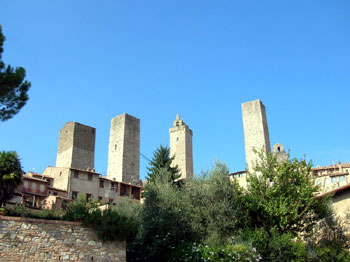 Being surrounded by so much history can be a little over whelming so we took a time out to clear our heads and check out the terra cotta and glazed pottery. Crafts and pottery that have been produced by local artisans are abundant in the open-air market and shops along Via Giovanni. I couldn’t resist bringing a handcrafted ornament home for my grand daughter.
Being surrounded by so much history can be a little over whelming so we took a time out to clear our heads and check out the terra cotta and glazed pottery. Crafts and pottery that have been produced by local artisans are abundant in the open-air market and shops along Via Giovanni. I couldn’t resist bringing a handcrafted ornament home for my grand daughter.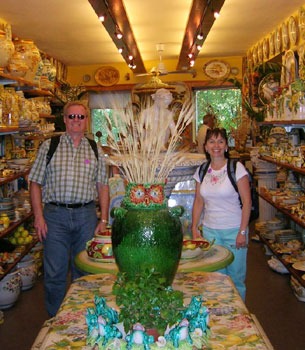 Fattorio Lischeto boasts a restored rustic farmhouse where we enjoyed the best of Tuscan cuisine and the company of fellow travelers from around the globe. The panoramic views of the surrounding farmland, Cypress groves, rolling hills and valleys could only surpassed the crispy crostini and pancheta, organic pecorino cheese, panchino tomatoes freshly picked from the garden and a drizzle of virgin olive oil. I still smile when I think of the organic Chianti.
Fattorio Lischeto boasts a restored rustic farmhouse where we enjoyed the best of Tuscan cuisine and the company of fellow travelers from around the globe. The panoramic views of the surrounding farmland, Cypress groves, rolling hills and valleys could only surpassed the crispy crostini and pancheta, organic pecorino cheese, panchino tomatoes freshly picked from the garden and a drizzle of virgin olive oil. I still smile when I think of the organic Chianti.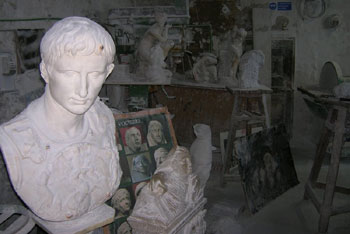 While San Gimignano is a busy tourist destination Volterra is what I had envisioned when I thought about an ancient Estrucan town. The City of Alabaster as it is known became important in the 18th century in part because of the quality and transparency of the alabaster in the region. To this day craftsman work in the dust filled workshops where you can watch them work and spend whatever amount you desire large or small for your memories. In celebration of their history of carving Volterra’s Museum of Alabaster boasts over three hundred original pieces, displayed in a 17th century convent.
While San Gimignano is a busy tourist destination Volterra is what I had envisioned when I thought about an ancient Estrucan town. The City of Alabaster as it is known became important in the 18th century in part because of the quality and transparency of the alabaster in the region. To this day craftsman work in the dust filled workshops where you can watch them work and spend whatever amount you desire large or small for your memories. In celebration of their history of carving Volterra’s Museum of Alabaster boasts over three hundred original pieces, displayed in a 17th century convent.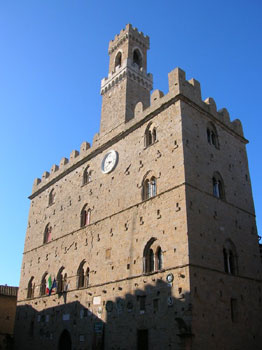 Early Roman influence is apparent in Volterra with the recent (in Tuscan time) discovery of the ruins of the Theatre of Vallebona from the 1st century and spa buildings from the Augustun age (5th century). Many of the archaeological finds from digs in and around Volterra and the Elsa Valley are displayed in the Guarnacci Museum, one of the first public museums in Europe that was founded in 1761 while the Romanesque style church of St. Agostino is the home to remnants of famous frescoes.
Early Roman influence is apparent in Volterra with the recent (in Tuscan time) discovery of the ruins of the Theatre of Vallebona from the 1st century and spa buildings from the Augustun age (5th century). Many of the archaeological finds from digs in and around Volterra and the Elsa Valley are displayed in the Guarnacci Museum, one of the first public museums in Europe that was founded in 1761 while the Romanesque style church of St. Agostino is the home to remnants of famous frescoes.